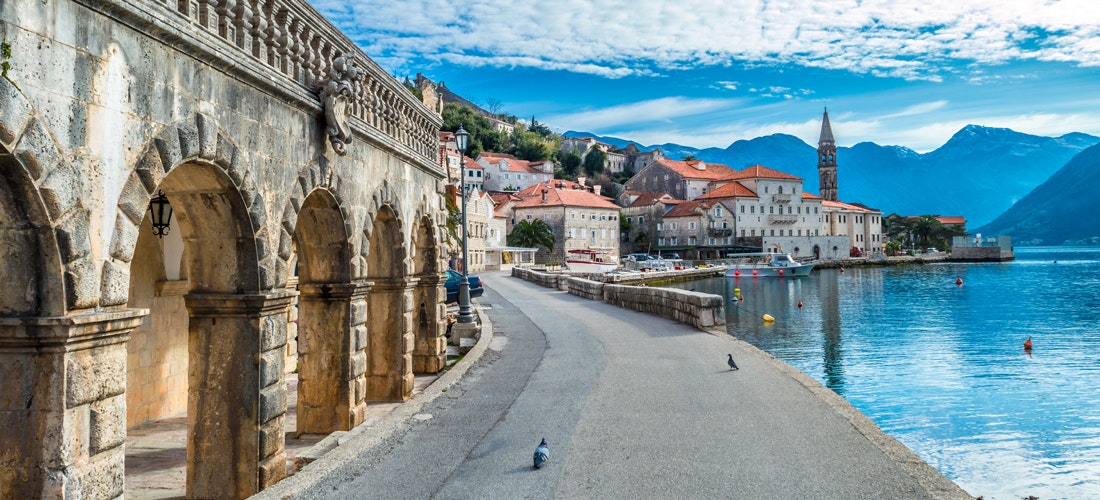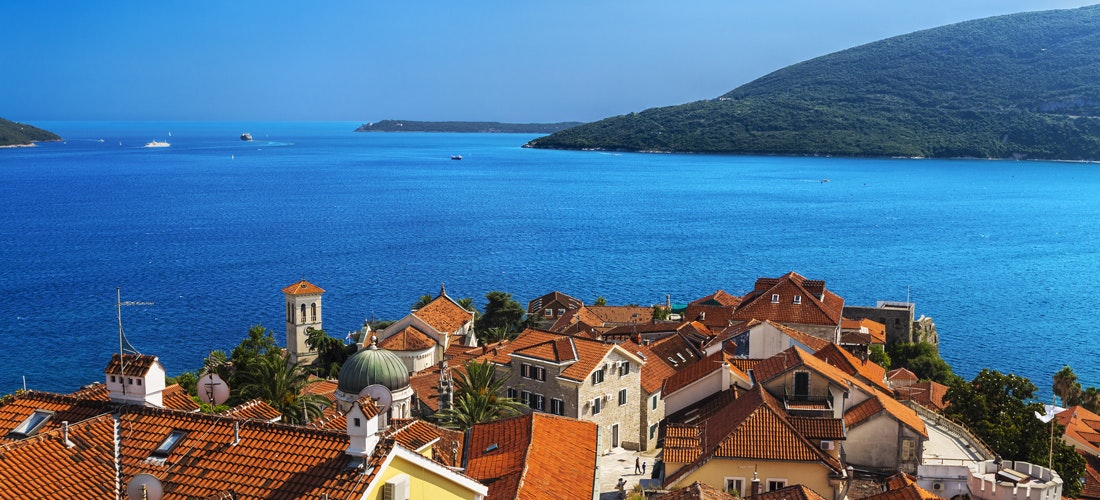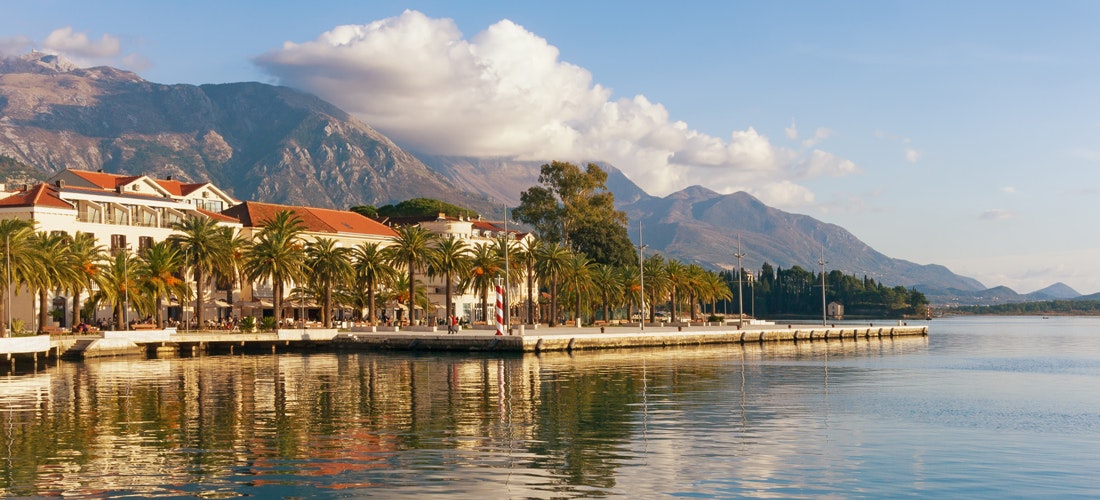KotorIt is located
in Boka Kotorska. The best preserved medieval town in Montenegro, which has been a UNESCO World Heritage Site since 1979. Kotor lies at the foot of the 1,749-metre high Lovćen limestone mountain. It is one of the few towns on the Adriatic coast to have preserved the appearance of a medieval town typical of the 12th-14th centuries. The city is surrounded by massive 4.5 km long city walls, in some places up to 20 metres high and 15 metres wide.
Most of the credit for building the fortifications goes to the Venetians, who ruled Kotor for almost four centuries. The city was able to withstand a siege lasting several months. You can climb the walls to high above the bay and to the terraces of the original medieval castle of St. John (Tvrdjava sv. Ivan). The climb takes 30-40 minutes in places, but it is definitely worth it! Along the way, you will enjoy breathtaking views. There is an entrance fee of EUR 3 per person. The staircase leading up to the fortress is reached via a winding alley that leads eastwards from Grbonja Palace. There are three preserved gates in the fortification system, the oldest of which, the southern gate (Gurdić's Gate), dates from the 9th century. The main sea gate (Morska vrata) and the northern gate have been preserved.
The town was an important maritime and commercial centre. The maritime tradition dates back to the 9th century, when the oldest association of sailors on the eastern Adriatic coast (the Brotherhood of Seafarers of Boka Kotor) was founded here. This institution brought together most of the seafarers, built up its own arsenal (ship manufacturing and repair), had an extensive commercialIt supported sailors and the families of those who died at sea, provided for the defence of the city and the safety and health control of ships. Apart from seafaring, other trades, such as goldsmithing, supported the population. There was also a well-known painting school.
The old town is built on a triangular plan. Many historic buildings can be found in the narrow streets and squares of the medieval core. The city's greatest jewels are the vast Square of Arms, the Renaissance clock tower (Gradski Toranj), Liberation Square (Trg Oslobodenja) on which stands the Pima Palace, St. Tryphon (the most famous monument of the city, there are the remains of this martyr), the palace of the Drago family, Gurdić's bastion, the Byzantine Palace (14. The Church of St. Francis, the Church of St. Paul (dating back to the 13th century), the Church of St. It was used as a weapons storehouse and women's prison between the wars), the Church of St. Nicholas, the Church of St. Luke. Also worth a visit is the famous Maritime Museum, where you can see objects from the 15th-18th century. In the 18th and 18th centuries, ship models, old maps and plans, ship parts, weapons, portraits of sailors.
Swimming: you won't find sandy beaches on the Kotor Riviera, which are common in other parts of the Montenegrin coast. There are mainly pontoons, piers, pebble beaches and landscaped concrete areas. Swimming is possible at Morinj beach (about 1 km long, sand and shingle beach).beach), Risan beach (between Risan and Strp) and Bajova kula beach (a popular beach, 60 metres long). In high season the sea can be polluted. Much nicer swimming is around Budva.
Port of KotorThis is
a
year-round customs port, where the harbourmaster and customs office can be found on the waterfront; the police are in town. The port offers muring berths with water and electricity connections. The most pleasant and peaceful mooring is at the mouth of the river next to the harbour office. It is necessary to moor with the bow upstream (if there is a strong current, it is not possible to stand here). It is also possible to stand at the main quay or at anchor in the bay (depth 7 metres) at the end of the bay. The harbour is well protected. The price for standing is about 50 EUR for a 46 meter long boat. You can also anchor in the small marina of Muo. It is located on the west coast of Kotor Bay, less than 1 NM from Kotor. There is water and electricity. There is a regular bus service to Kotor. Warning. The water in the marina is drinkable and not of very good quality.
Kotor is a beautifully situated town at the foot of the 1749m high Lovcen. The ancient town nestled between the walls is truly beautiful. The fortress towering 200m above the harbour is also worth a visit. Take a little better shoes, the climb is not easy in places. There are mooring ropes and electricity on the pier. Kotor is a customs port where you can also check in. I recommend you do your first entry clearance on arrival in Montenegro in Kotor and exit in Zelenica.





